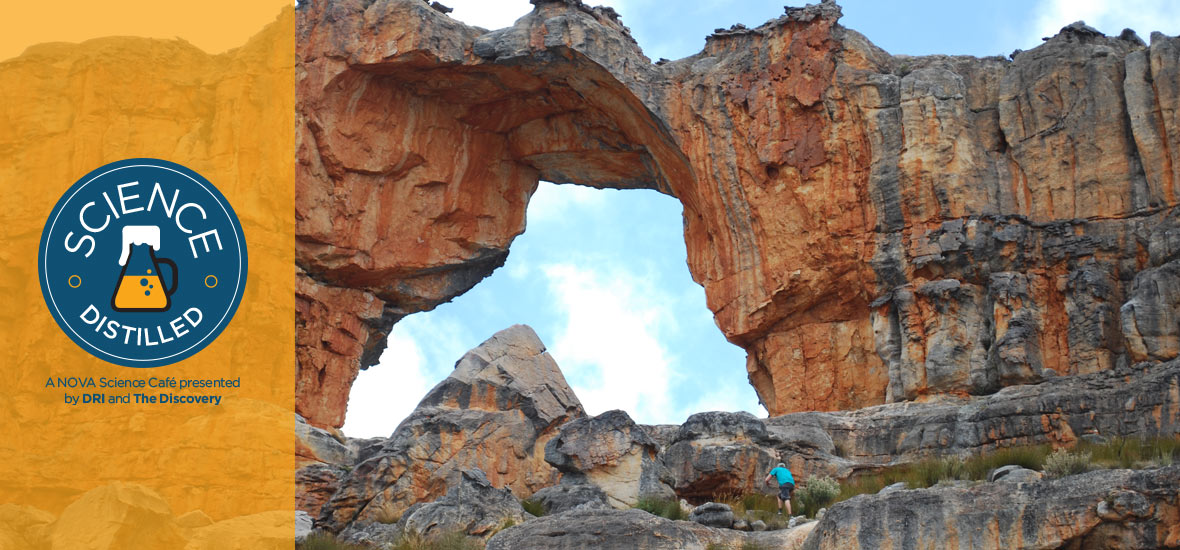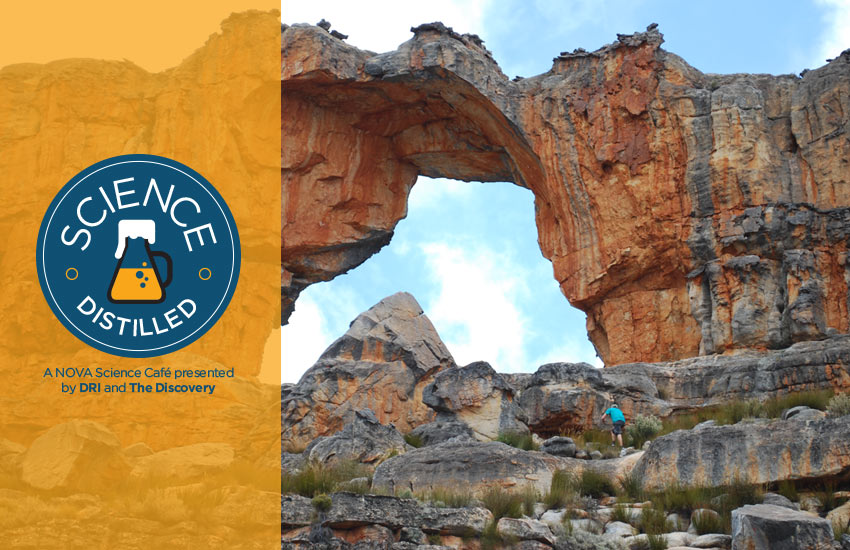Science Distilled, a new lecture series created by DRI and The Discovery, makes cutting-edge science approachable through presentations on current and curious topics held at hip locations in a social atmosphere.
Are you in love with the land? If we listen closely enough, it will tell us its stories.
Stories come to us in many forms. Myths and legends are one way to understand what came before, and science has another tale to tell, drawing from evidence and observations of the world around us. Let our scientists share their stories of how they understand what sculpts the Earth. Let us awe you with accounts of the forces that shape the landscapes that surround you.
Our first speaker, Amanda Keen-Zebert, PhD will share her experiences in South Africa studying the shape of the Earth. What we think about rivers (and how we manage them) are highly influenced by our previous experiences and ideas about how they behave. But river patterns can be deceptive. Amanda will share her work on river behavior and the surprising impact it had on land management in South Africa.
Our second speaker, Adam Watts, PhD, is an ecologist with many talents. His work has branched out to include the ways that plant communities actually sculpt the land they call home. Many ecosystems across the globe exhibit patterning, or repeating shapes across space, and there are special organisms that actually exert an imprint on the land. Adam’s project examines a place in South Florida where this kind of ecological footprint has been happening long enough that we can see it in the bedrock.
Join us for Science Distilled, and let us inspire you with experiences from different corners of the world and our own backyard. Let us grow your love of the land.
Time: Doors open at 7:00pm, presentation begins at 7:30pm
Location: Patagonia Outlet, 130 S. Center Street, Reno
Amanda Keen-Zebert, Ph.D.
In her work, Amanda determines the age of soils and sediment using a special geological procedure called luminescence dating.
Adam Watts, Ph.D.
Adam specializes in detecting ecological “footprints” in patterned landscapes such as by fire and plant communities. This means that he focuses a lot of attention on the interaction between ecosystems and landscape disturbance.





